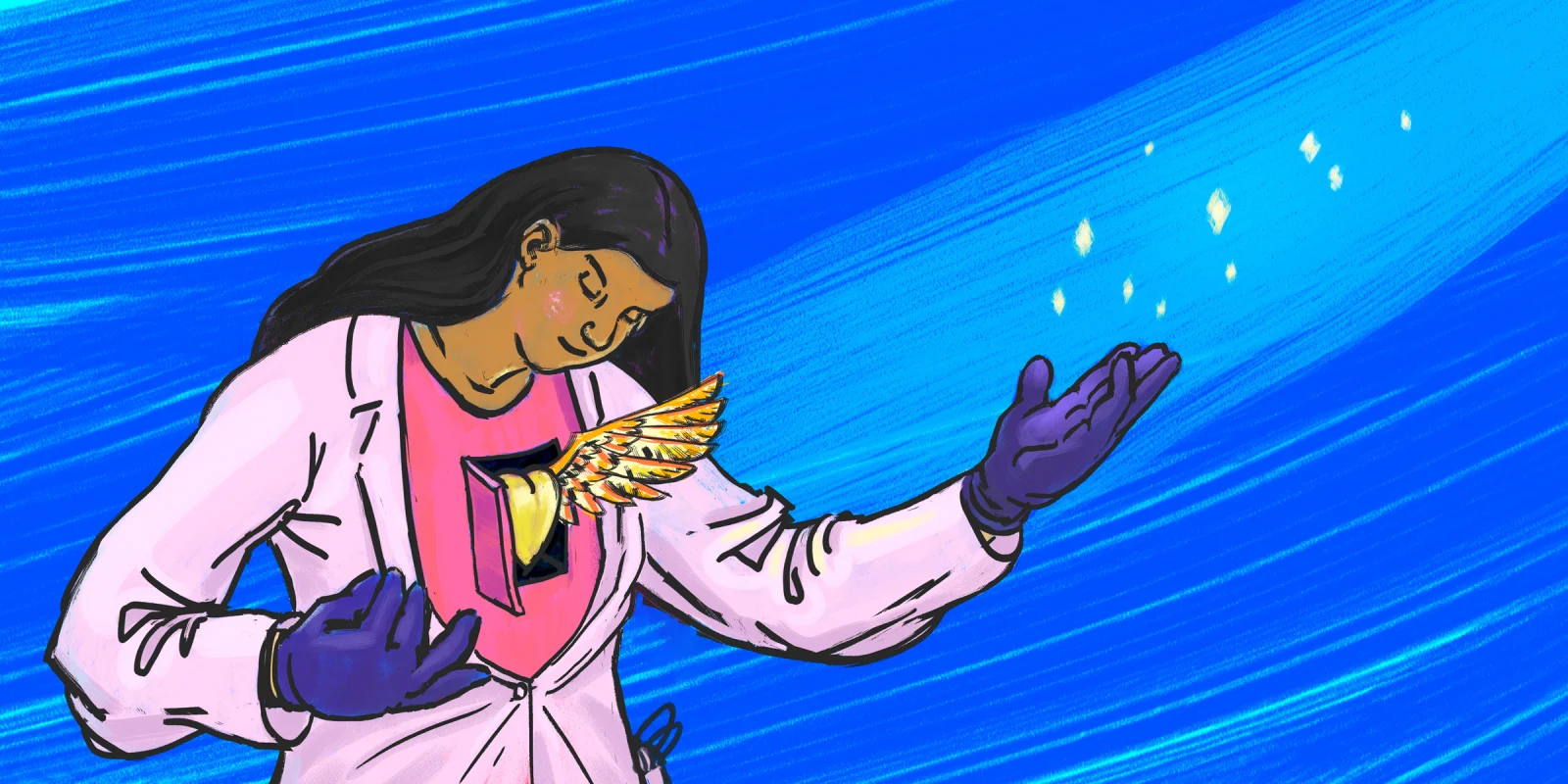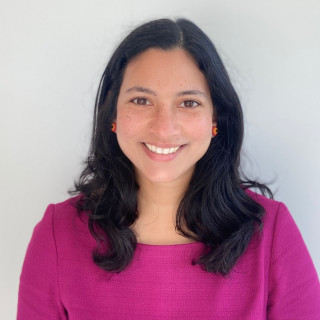Throughout residency and fellowship, I was inspired by physicians who could diagnose pneumonia without an X-ray or who could spend just 45 minutes with a patient before uncovering a diagnosis that had stumped our team for days. Others could transform contentious goals of care conversations into moments of connection and healing. To me, they seemed like wizards. So when I landed my first palliative care job at one of the greatest hospitals in the world, flanked by NIH-funded researchers, WHO policymakers, and the founders of modern palliative care, I was thrilled to work amongst my heroes.
I thought academic medicine would give me the freedom to take excellent care of my patients, to teach palliative care skills to students, and to reflect on my experience as a young physician through narrative. Unfortunately, during a mentorship meeting, it became clear to me that clinical care and teaching was not sufficient to succeed. An adviser of mine once disclosed the recipe for success in academic medicine: one part finding your niche and three parts marketing (including branding yourself as the expert and publishing a lot, regardless of genuine interest). I was strongly encouraged to sniff out opportunities to “write it up” and increase the amount that I publish. For example, a complicated patient case could turn into a presentation at a conference and a journal article. An educational lecture should be submitted for publication in a medical education repository. While I was grateful for this advice, it did not align with my interests. My list of should-do items piled up, and my want-to-do items got buried.
Over time, I noticed that many physician colleagues were experiencing burnout. Like me, they were frantically drafting journal articles while also finding ways to turn them into opinion pieces or presentations. They had no time to teach medical students. No one wanted to be on call as this stole time away from research that could lead to promotion. Some were browsing for other jobs, as they felt trapped in their current ones. Scholarship was not about curiosity, learning, and creating. Rather, we were utilizing blunt-edged research to birth multiple articles, and to jam these articles through the publication process.
Where were the wizards I had met during training? One worked as a primary care physician part of the week and channeled her inner Sherlock Holmes to solve medical mysteries the other part of the week. Another cared for patients on the inpatient wards in both the U.S. and Uganda. Some had decreased their clinical time as they neared retirement, and others had died. As it turns out, these physicians and their careers are rare. They had not followed a traditional career path. Instead, they had carved out their own. They were also not immune to the pressures of academic medicine. Despite their successes and value to their academic institutions, they fought to have control over their schedules and the projects they pursued.
I turned to my family of mentors to understand if they too felt disillusioned. A clinician-researcher whispered that she often wondered whether a research project was designed to answer a clinical question or if it was designed for publication. A physician mentor with over 30 years of clinical service under her belt confided that, in retiring early, she worried she may be seen as weak for walking away before her peers and before becoming a “full professor.” A midcareer physician shared that she too had balked at the “write-it-up” culture of academic medicine. But when she decided to follow through by finding a niche and publishing, she started to succeed.
Academic medicine still held allure for me. Academic institutions lend a halo of prestige and opportunities. They opened doors for me. For example, I assumed the position of an editor at an important medical journal simply because these types of positions were passed down from one faculty member to another. At the same time, academic medicine’s hierarchy could be oppressive. When a person in a position of authority asked me to take on any project, I felt pressured to comply. A couple months before my maternity leave, I was hounded by three different faculty members from two different affiliated institutions to take on what they felt was a career advancing opportunity. I said no three times and then was followed into the bathroom and asked again. Refusing to take on extra work can be seen as ingratitude or not being a team player. Then, when I found a project that excited me, I hated asking my supervisors for permission, knowing that the answer was often “no.”
I eventually found myself negotiating with my supervisors for crumbs of joy, passion projects that I squeezed in on top of the many other responsibilities. But this was not sustainable. I did not want to publish papers simply to add a line to my CV. I no longer wanted to check off boxes on the path to promotion. I wanted to spend time at the bedside connecting with patients and their families, even though patient care does not lead to promotion. I wanted to help residents process the feelings of helplessness, personal responsibility, and incompetence that comes with the death of a patient. I wanted to explore out of genuine curiosity, and it felt like there was little room for this within the high-pressure environment of academic medicine, and that was OK. It was time to untie myself from my own expectations of a successful medical career and the expectations of others.
I took a closer look at my priorities, my interests, and my long-standing dream of living abroad. I reached out to physicians who had left the traditional path and had created opportunities for themselves. Through them, I learned about how to build a concierge private practice, how to practice medicine outside the U.S., and how to create a blog to support physicians. I learned that there was a Milky Way of career possibilities and just as many definitions of success. It was with this realization that I gave myself permission to leave.
On my last day, I peeled the opioid conversion table off the wall, chucked my palliative care books into my backpack, and dumped a drawer of journal articles into the recycling bin. I glided out of the office with a smile as bright as the summer’s sun. I was leaving academic medicine. My younger self would have been shocked.
In August 2020, my family and I boarded a one-way plane to Portugal, having stuffed our entire life into suitcases and a double stroller. I now revel under the Portuguese sun concocting my own recipe, from scratch. I am learning a new language, a new culture, a new health care system, and I launched two new businesses. The first empowers individuals who are aging and living with illness, and their caregivers, and the second empowers physicians who dream of practicing medicine outside the U.S. It is overwhelming and exhilarating to find my own way to connect with patients and fellow physicians.
There are some physicians whose goals and values align with those of academic medicine, and they thrive in this environment. Many others, like me, were groomed to work in this environment and chose academic medicine by default, and may now feel trapped. To these physicians I say, create the space to dream, to define the life you want. Know that leaving the traditional path can be isolating, uncomfortable, and lonely. So reach out to like-minded people to combat loneliness. My hope is that you too will experience the thrill of stepping into your own shoes, unshackled, wondering, what else is possible?
What aspects of medicine have left you feeling unfulfilled? What measures have helped address it? Share your experiences in the comment section.
Ashwini Bapat is a palliative care doctor and co-founder of EpioneMD, which provides virtual serious illness and advance care plan coaching to individuals and caregivers and telepalliative care consultations to health care organizations. She is also co-founder of Hippocratic Adventures, a community that empowers physicians with the knowledge, job opportunities, and personalized guidance they need to practice medicine abroad.
Illustration by Jennifer Bogartz







